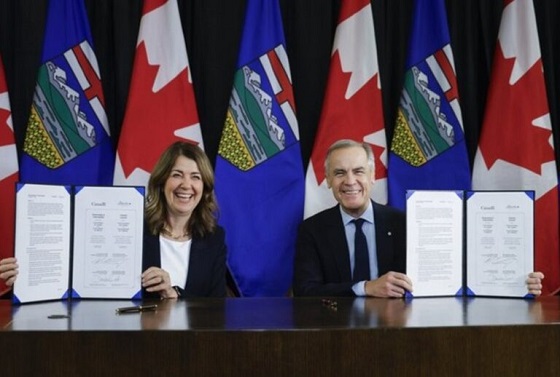Fraser Institute
Other countries with universal health care don’t have Canada’s long wait times

From the Fraser Institute
By Mackenzie Moir and Bacchus Barua
Unfortunately it’s now very common to see stories about how long provincial wait times for medical care are driving patients to seek care elsewhere, often at great personal cost. Take the recent case of the Milburns in Manitoba who, after waiting years for a knee surgery, are now considering selling their home and moving to Alberta just to get on a potentially shorter public wait list.
Patients in Manitoba could expect to wait a median of 29 weeks to see an orthopedic specialist after a referral from a family physician, then they still faced a median 24.4 week wait to get treatment. In other words, the total typical wait for orthopedic surgery in the province is more than one year at 53.4 weeks. Remember, that’s a median measure, which means some patients wait much longer.
Unfortunately, the Milburns are unlikely to get more timely care on the public wait list in Alberta. At 64.1 weeks, the total median wait for orthopedic care in Alberta was actually longer than in Manitoba. And this doesn’t include the time it takes for provincial coverage to activate for a new provincial resident, or the time it will take to find a new family doctor and get the necessary tests, scans and referrals.
To get more timely care, the Milburns are left with unenviable options. Because they’re insured by Manitoba’s public health-care plan, paying for covered care out of pocket is restricted. They can, however, pay for and receive care privately in other provinces as uninsured visitors (i.e. not move there permanently). Specifically, certain provinces have “exemptions” that allow physicians to charge out-of-province patients directly to provide these procedures privately.
Alternatively, the Milburns could leave Canada and travel even further from home to receive timely care abroad.
But it doesn’t have to be this way.
Long wait times are not the necessary price Canadians must pay for universal coverage. In fact, Canada is one of 30 high-income countries with universal health care. Other countries such as Switzerland, the Netherlands, Germany and Australia have much shorter wait times. For example, only 62 per cent of Canadians reported access to non-emergency surgery in less than four months in 2020 compared to 99 per cent of Germans, 94 per cent of Swiss and 72 per cent of Australians.
The difference? These countries approach health care in a fundamentally different way than us. One notable difference is their attitude towards the private sector.
In Germany, patients can seek private care while still insured by the public system or can opt out and purchase regulated private coverage. These approaches (universal, privately paid or privately insured) are able to deliver rapid access to care. The Swiss simply mandate that patients purchase private insurance in a regulated-but-competitive marketplace as part of their universal scheme. Lower-income families receive a subsidy so they can participate on a more equal footing in the competitive marketplace to obtain the insurance that best fits their needs.
Perhaps the most direct comparator to Canada is Australia—not just geographically, but because it also primarily relies on a tax-funded universal health-care system. However, unlike Canada, individuals can purchase private insurance to cover (among other things) care received as a private patient in a public or private hospital, or simply pay for their private care directly if they choose. In 2021/22 more than two-thirds (70 per cent) of non-emergency admissions to a hospital involving surgery (both publicly and privately funded) took place in a private facility.
Of course, these faster-access countries share other differences in attitudes to universal health-care policy including requirements to share the cost of care for patients and funding hospitals on the basis of activity (instead of Canada’s outdated bureaucratically-determined budgets). A crucial difference, however, is that patients are not generally prevented from paying privately for health care in their home province (or canton or state) in any of these countries.
Without fundamental reform, and as provincial systems continue to struggle to provide basic non-emergency care, we’ll continue to see more stories like the Milburn’s. Without reform, many Canadians will continue to be forced to make similarly absurd decisions to get the care they need, rather than focusing on treatment and recovery.
Authors:
Fraser Institute
How to talk about housing at the holiday dinner table

From the Fraser Institute
The holidays are a time when families reconnect and share cherished traditions, hearty meals and, occasionally, heated debates. This year, housing policy might be a touchy subject at the holiday dinner table. Homebuilding has not kept pace with housing demand in Canada, causing a sharp decline in affordability. Efforts to accelerate homebuilding are also changing neighbourhoods, sometimes in ways that concern residents. Add in a generational divide in how Canadians have experienced the housing market, and it’s easy to see how friends and family can end up talking past one another on housing issues.
Some disagreement about housing policy is inevitable. But in the spirit of the holidays, we can keep the conversation charitable and productive by grounding it in shared facts, respecting one another’s housing choices, and acknowledging the trade-offs of neighbourhood change.
One way to avoid needless conflict is to start with a shared factual baseline about just how unaffordable housing is today—and how that compares to the past.
The reality is that today’s housing affordability challenges are severe, but not entirely unprecedented. Over the past decade, prices for typical homes have grown faster than ordinary families’ after-tax incomes in nearly every major city. At the pandemic-era peak, the mortgage burden for a typical purchase was the worst since the early 1980s. The housing market has cooled in some cities since then, but not enough to bring affordability back to pre-pandemic levels—when affordability was already strained.
These facts provide some useful context for the holiday dinner table. Today’s aspiring homebuyers aren’t wrong to notice how hard it has become to enter the market, and earlier generations aren’t exaggerating when they recall the shock of double-digit interest rates. Housing affordability crises have happened in the past, but they are not the norm. Living through a housing crisis is not, and should not be, a generational rite of passage. Canada has had long periods of relative housing affordability—that’s what we should all want to work towards.
Even when we agree on the facts about affordability, conflicts can flare up when we judge one another’s housing choices. Casual remarks like “Who would want to live in a shoebox like that?” or “Why would anyone pay that much for so little?” or “Why are you still renting at your age?” may be well-intentioned but they ignore the constraints and trade-offs that shape where and how people live.
A small townhome with no yard might seem unappealing to someone who already owns a single-detached house, but for a first-time homebuyer who prioritizes living closer to work or childcare, it might be the best option they can afford.
At first glance, a new condo or townhome might look “overpriced” compared with nearby older single-family homes that offer more space. But buyers must budget for the full cost of ownership, including heating bills, maintenance and renovations, which can make the financial math on some “overpriced” new homes pencil out.
And renting isn’t necessarily a sign that someone is falling behind. Many renters are intentionally keeping their options open: to pursue job opportunities in other cities, to sort out their romantic lives before committing to homeownership, or to invest their money outside of real estate.
This isn’t just a dinner-table issue. The belief that “no one wants to live like that” leads some to support policies restricting apartments, townhomes or purpose-built rentals on the premise that they’re inherently undesirable. A better approach is to set fair rules and let builders respond to what Canadian families choose for themselves—not what we think they should want.
The hardest housing conversations are about where new homes should go, and who gets a say as neighbourhoods change.
It’s natural for homeowners to feel uneasy about how their neighbourhoods might change as a consequence of housing redevelopment. But aspiring homebuyers are also right to be frustrated when local restrictions prevent the kinds of homes Canadian families want from being built in the places they want to live. The economics is clear—allowing more housing styles to be built in more places means greater options and lower prices for renters and homebuyers.
There’s no simple way to balance the competing views of existing residents and aspiring homebuyers. But the conversation becomes more productive if both sides recognize an unavoidable trade-off—resistance to neighbourhood change reliably restricts housing options and makes housing less affordable, but redevelopment can entail real downsides for existing residents.
Everyone wants better housing outcomes for Canadian families, but we won’t get them by talking past one another. If we bring empathy to the table and stay clear eyed about the trade-offs, we’ll collectively make better housing policy decisions—and have calmer holiday dinners.
Alberta
A Christmas wish list for health-care reform

From the Fraser Institute
By Nadeem Esmail and Mackenzie Moir
It’s an exciting time in Canadian health-care policy. But even the slew of new reforms in Alberta only go part of the way to using all the policy tools employed by high performing universal health-care systems.
For 2026, for the sake of Canadian patients, let’s hope Alberta stays the path on changes to how hospitals are paid and allowing some private purchases of health care, and that other provinces start to catch up.
While Alberta’s new reforms were welcome news this year, it’s clear Canada’s health-care system continued to struggle. Canadians were reminded by our annual comparison of health care systems that they pay for one of the developed world’s most expensive universal health-care systems, yet have some of the fewest physicians and hospital beds, while waiting in some of the longest queues.
And speaking of queues, wait times across Canada for non-emergency care reached the second-highest level ever measured at 28.6 weeks from general practitioner referral to actual treatment. That’s more than triple the wait of the early 1990s despite decades of government promises and spending commitments. Other work found that at least 23,746 patients died while waiting for care, and nearly 1.3 million Canadians left our overcrowded emergency rooms without being treated.
At least one province has shown a genuine willingness to do something about these problems.
The Smith government in Alberta announced early in the year that it would move towards paying hospitals per-patient treated as opposed to a fixed annual budget, a policy approach that Quebec has been working on for years. Albertans will also soon be able purchase, at least in a limited way, some diagnostic and surgical services for themselves, which is again already possible in Quebec. Alberta has also gone a step further by allowing physicians to work in both public and private settings.
While controversial in Canada, these approaches simply mirror what is being done in all of the developed world’s top-performing universal health-care systems. Australia, the Netherlands, Germany and Switzerland all pay their hospitals per patient treated, and allow patients the opportunity to purchase care privately if they wish. They all also have better and faster universally accessible health care than Canada’s provinces provide, while spending a little more (Switzerland) or less (Australia, Germany, the Netherlands) than we do.
While these reforms are clearly a step in the right direction, there’s more to be done.
Even if we include Alberta’s reforms, these countries still do some very important things differently.
Critically, all of these countries expect patients to pay a small amount for their universally accessible services. The reasoning is straightforward: we all spend our own money more carefully than we spend someone else’s, and patients will make more informed decisions about when and where it’s best to access the health-care system when they have to pay a little out of pocket.
The evidence around this policy is clear—with appropriate safeguards to protect the very ill and exemptions for lower-income and other vulnerable populations, the demand for outpatient healthcare services falls, reducing delays and freeing up resources for others.
Charging patients even small amounts for care would of course violate the Canada Health Act, but it would also emulate the approach of 100 per cent of the developed world’s top-performing health-care systems. In this case, violating outdated federal policy means better universal health care for Canadians.
These top-performing countries also see the private sector and innovative entrepreneurs as partners in delivering universal health care. A relationship that is far different from the limited individual contracts some provinces have with private clinics and surgical centres to provide care in Canada. In these other countries, even full-service hospitals are operated by private providers. Importantly, partnering with innovative private providers, even hospitals, to deliver universal health care does not violate the Canada Health Act.
So, while Alberta has made strides this past year moving towards the well-established higher performance policy approach followed elsewhere, the Smith government remains at least a couple steps short of truly adopting a more Australian or European approach for health care. And other provinces have yet to even get to where Alberta will soon be.
Let’s hope in 2026 that Alberta keeps moving towards a truly world class universal health-care experience for patients, and that the other provinces catch up.
-

 Business2 days ago
Business2 days agoSome Of The Wackiest Things Featured In Rand Paul’s New Report Alleging $1,639,135,969,608 In Gov’t Waste
-

 Energy2 days ago
Energy2 days ago‘The electric story is over’
-

 Alberta1 day ago
Alberta1 day agoOttawa-Alberta agreement may produce oligopoly in the oilsands
-

 International1 day ago
International1 day ago$2.6 million raised for man who wrestled shotgun from Bondi Beach terrorist
-

 Energy1 day ago
Energy1 day agoWestern Canada’s supply chain for Santa Claus
-

 Energy1 day ago
Energy1 day agoThe Top News Stories That Shaped Canadian Energy in 2025 and Will Continue to Shape Canadian Energy in 2026
-

 armed forces12 hours ago
armed forces12 hours agoRemembering Afghanistan and the sacrifices of our military families
-

 Fraser Institute12 hours ago
Fraser Institute12 hours agoHow to talk about housing at the holiday dinner table









